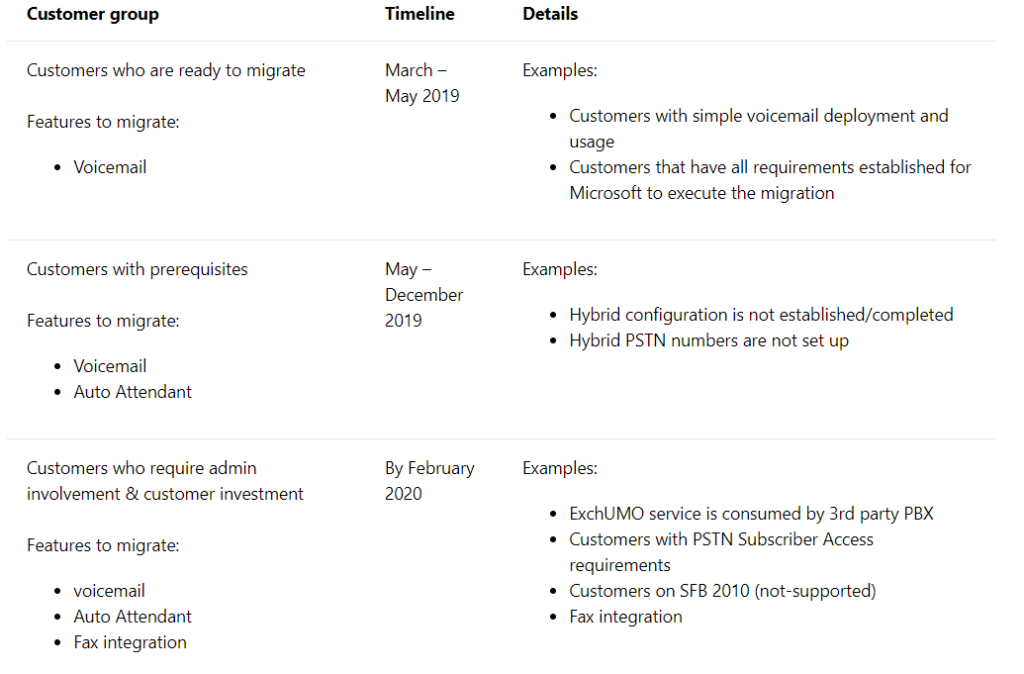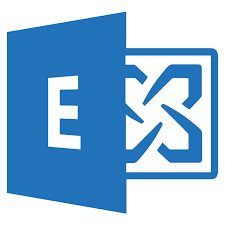Exchange Unified Messaging is a role in Exchange that handles voice messages, you can have your voicemail here and you can use it for Auto Attendant, a service that allows callers to be automatically transferred to an extension without the intervention of an attendant.
In Exchange Server 2019 Microsoft removed this feature and referred to Cloud Voicemail instead and now Microsoft have announced that the UM role will be removed from Exchange Online as well. Voice mail will be moved to Cloud Voicemail and Auto Attendants have to be moved to Cloud Auto Attendant or a third-party service, okay Microsoft did not say third-party but that is an option for you.
First of all if you are running Teams you already have Cloud Voicemail and you might only be interested of the last part of this article about new features coming. If you are running Lync Server 2010 you have another problem, you have to update to Skype for Business or move to Teams since you don’t have any mainstream support anymore and Lync 2010 won’t be supported by Cloud Voicemail.
If you run Lync Server 2013 or Skype for Business Server 2015 with Exchange UM Online you will be transitioned by Microsoft to Cloud Voicemail on or before February 2020. Microsoft will start to notify customers in February 2019 and then move them in March 2019 and then continue moving organizations until Feb 2020. When you move depends on what services you are using, in the first wave they will move “Customers with simple voicemail deployment and usage” and that is organizations only using voicemail.
From May to December 2019 customers using voicemail and Auto Attendant without a hybrid setup (Online and On-Prem Skype) and without PSTN Subscriber Access (users call in to check their voicemail) will be moved. And in the last wave by February 2020 the remaining part will be moved.

Third-party PBX
If you are using Exchange Online voicemail with a PBX from another vendor you won’t be able to move to Cloud Voicemail since it is not in the roadmap to support anything else than Teams and Skype for Business. Maybe not a surprise since Microsoft announced this a couple of times before and postponed the date for discontinue 3rd-party PBX support at least two times.
Notification
You will be notified 30 days before your organization is moved from Exhange Online Unified Messaging. Keep Monitor the Admin Notification Center. If you need to postpone your migration that is possible after you get the notification by contacting Microsoft Support, you won’t be able to move beyond the retirement date February 2020.
You will also be able to opt-in from May 2019 if you don’t want to wait until Microsoft notifies you. This might be the best for you since you then will be able to plan the migration better to suit critical business periods or vacation times.
It is a short timeframe and it might be so that Microsoft have to extend this, keep in mind that they extended the support for third-party PBX via SBC to EXO a couple of times already.
Features coming or not coming
If you have used Microsoft Teams with Cloud Voicemail and previously used Exchange UM Voicemail you might miss some things. Here is a list of features that will come to Cloud Voicemail and Teams Auto Attendant.
- Support Skype for Business Server – Q1 CY2019 (first Quarter, Calendar Year 2019)
- Call answering rules – Q1CY19
- Web portal administration – CY19
- Transfer to PSTN number externally – Q2CY19
- Extension dialing (Reaching a user by dialing their extension) – CY19
- Mailbox for AA callers to leave a message – CY19
This is features that we have in Exchange UM not listed as a feature that is planned for Cloud VM and AA.
- PSTN Dial-in Access
- PSTN Outlook Voice Access
- Record personal greetings (PSTN) – play on phone
- User setting to disable transcription
- Sending a voice message to a group of users ( Voicemail broadcast)
- Voicemail notification using SMS
- Play on phone (PSTN)- to play message
- Caller experience – protected voicemail (The caller can choose an option to mark a recorded message as protected)
- Caller experience – private voicemail (The caller can choose an option to mark a recorded message as private)
- Silence detection
- Change silence detection timeout
- Change recording duration time limit (CloudVM hard coded to 5 minutes)
- Change number of input failure (CloudVM hard coded to 3)
- Disable/enable missed call notification
- Customize text message for enabled users
- AA support 3rd-party PBX
- Fax integration
One thing not mentioned is how customers with their own number to their Exchange Auto Attendant should do, currently you are only able to use a Service Number from Microsoft in the Cloud Auto Attendant and you can’t use numbers coming in via Direct Routing for this. I heard rumors that it will be supported and there is an Uservoice for this, but I’ve not seen anything official.
Another feature I know customers use is the PSTN dial-in access, I’ve seen it more in APAC and USA than in Europe. I guess they still will want it but it should not be a big issue since there will be other ways of checking their voicemail. And is voicemail really that important? I (many people I know) hangs up when we are connected to a voicemail, there is better ways to notify someone that you tried to reach them and we don’t listen to voicemail directly.
Official announcement from Microsoft
Exchange Unified Messaging Online migration support

M365 Apps & Services MVP | Consultant work at Exobe, based in Göteborg, Sweden. Co-host of Teamspodden, co-organizer of Teamsdagen. Been working with Exchange, LCS, OCS, Lync, Skype, Teams and related stuff for a while. Mostly writing tips and news after getting questions from customers.
